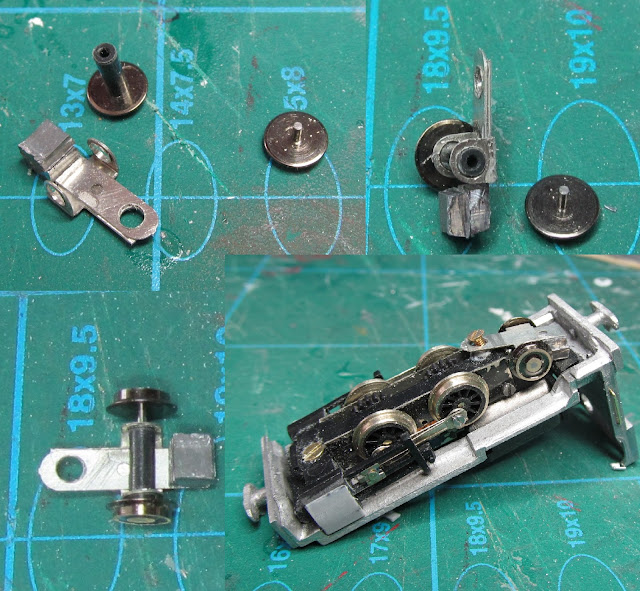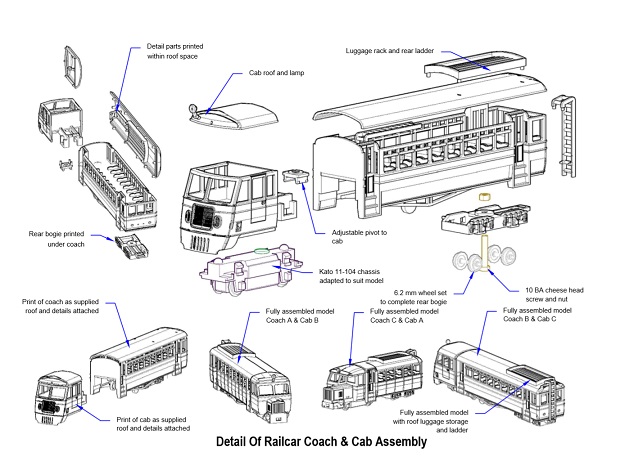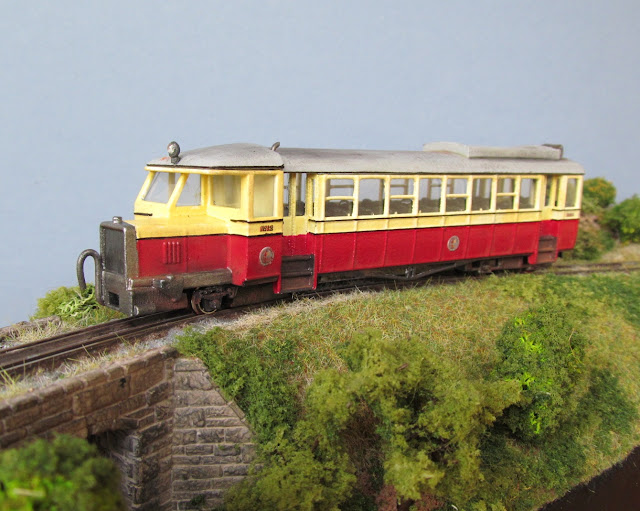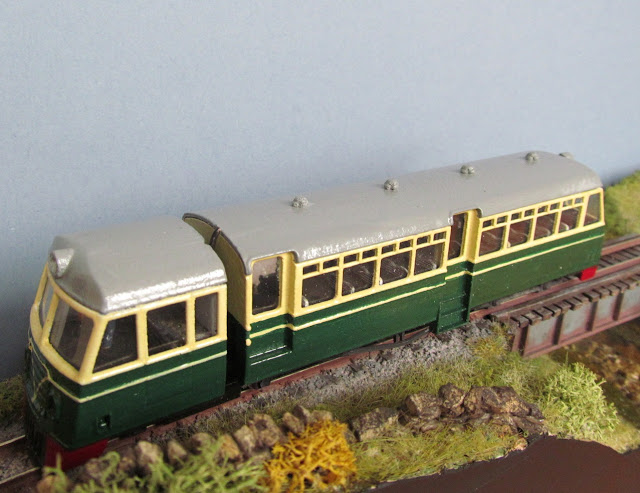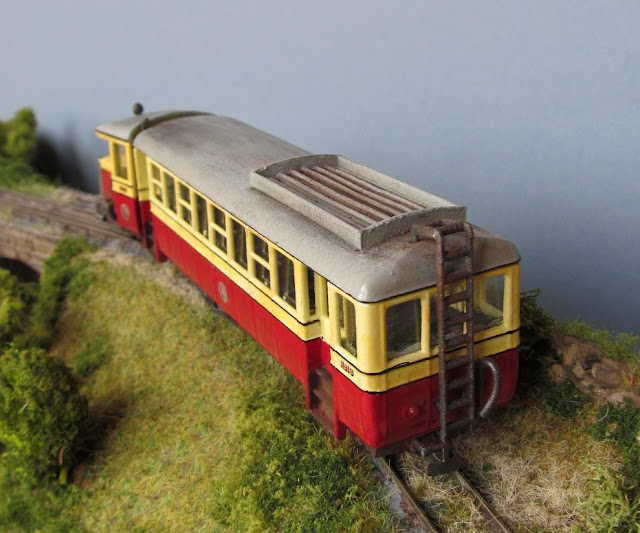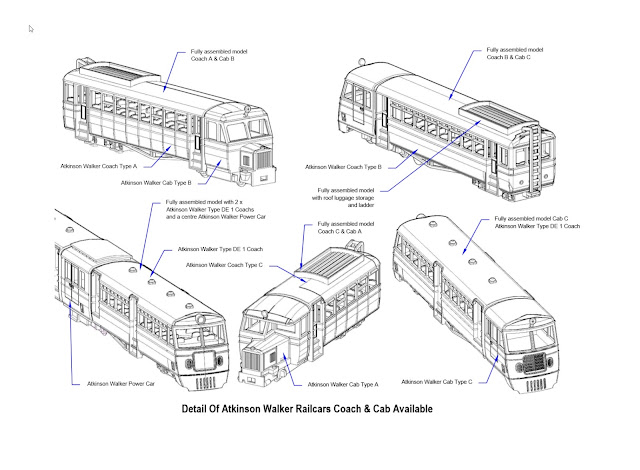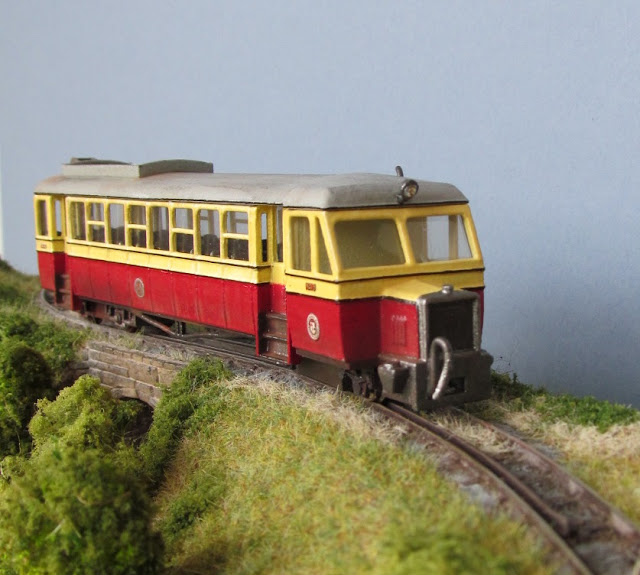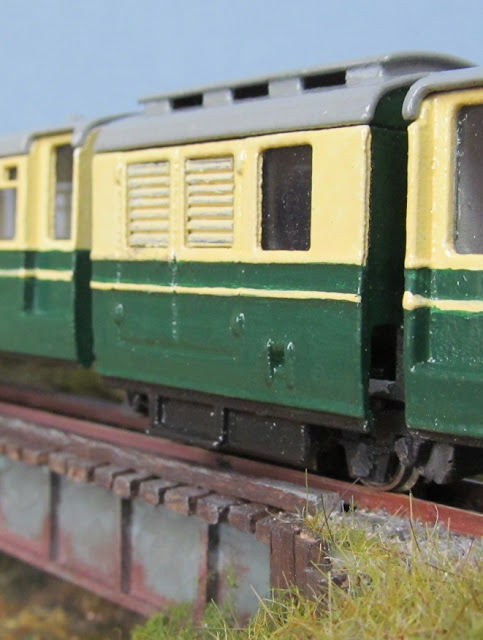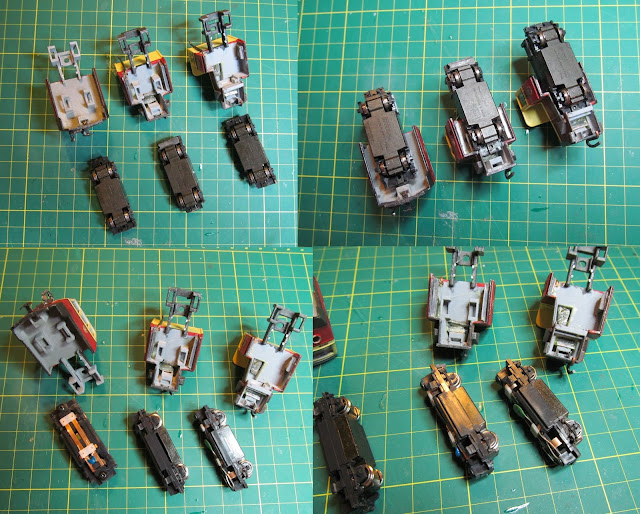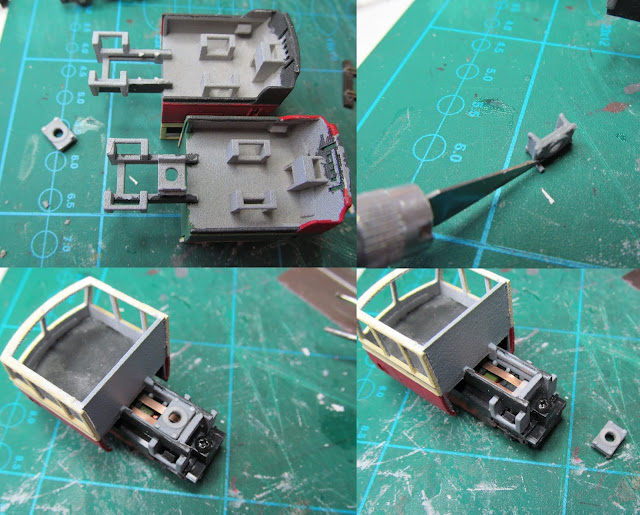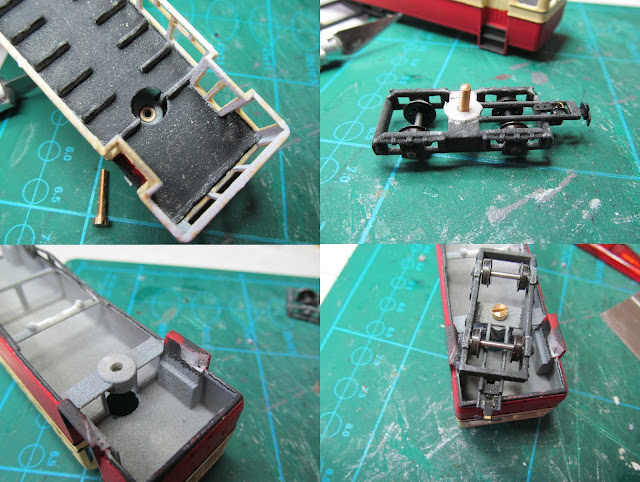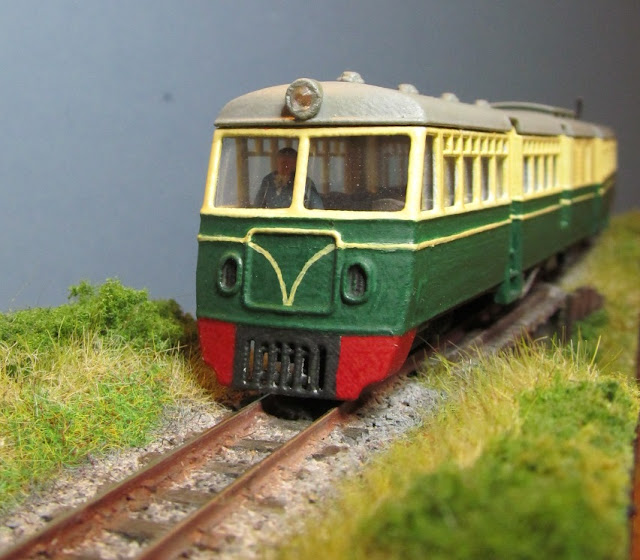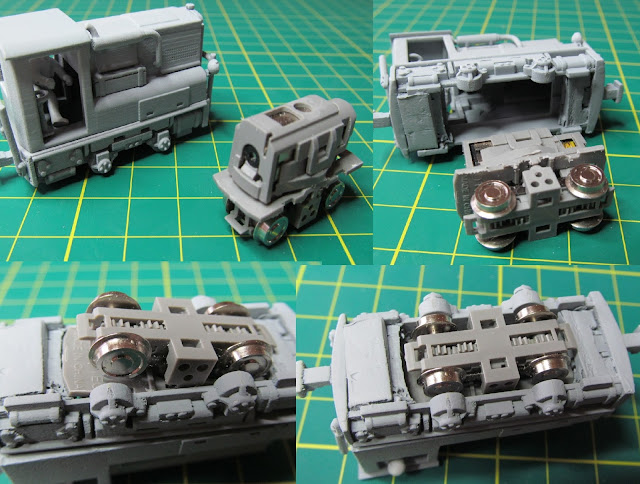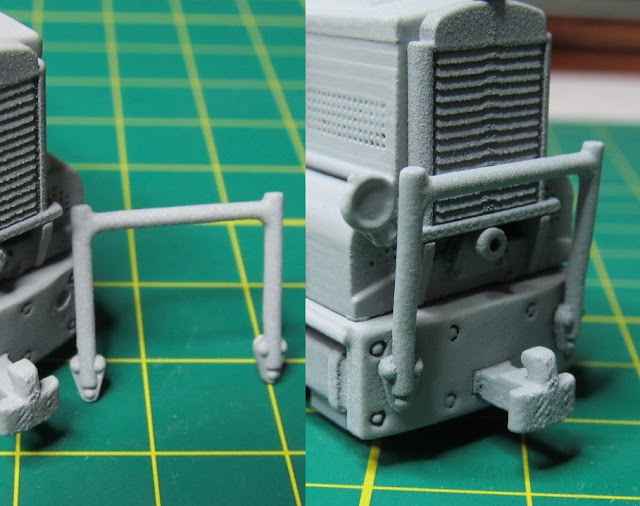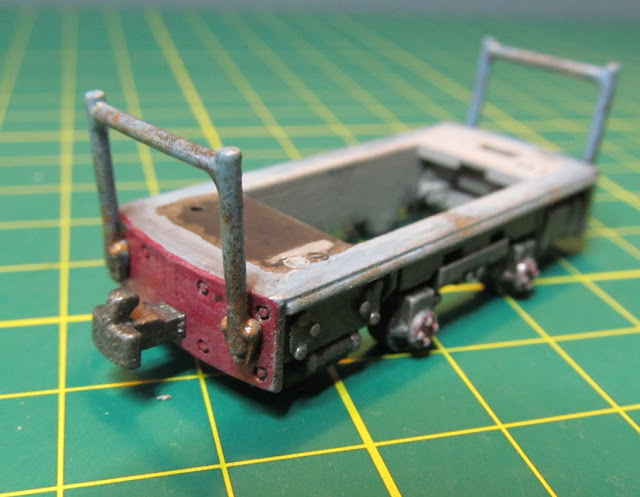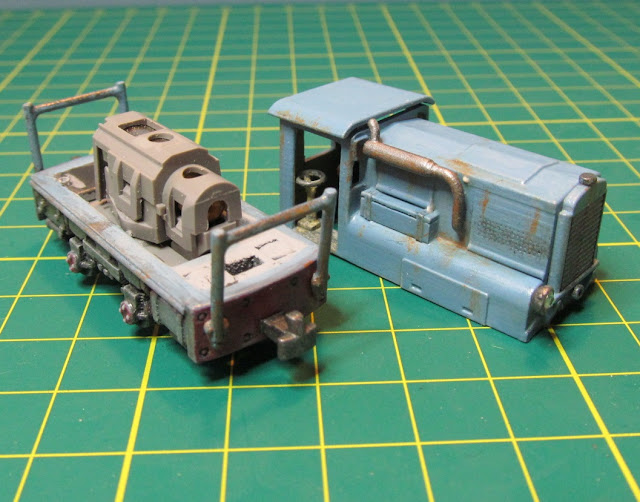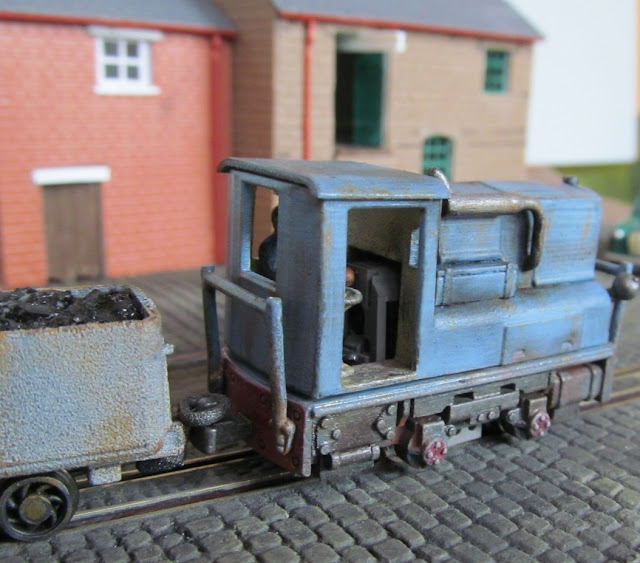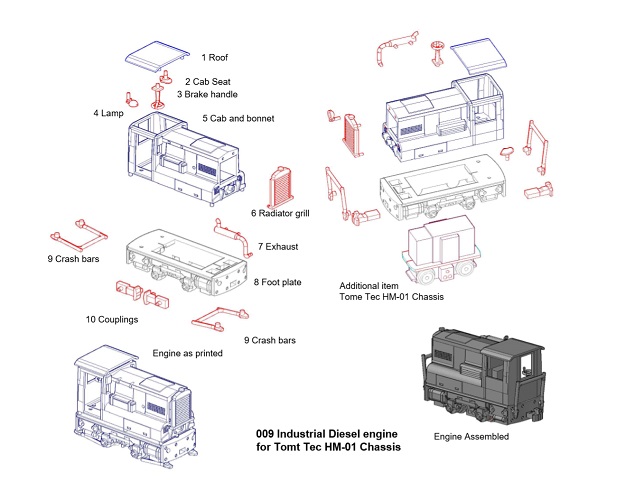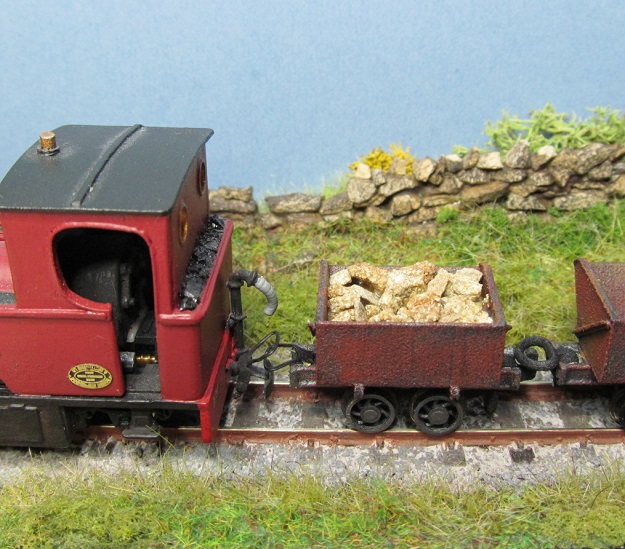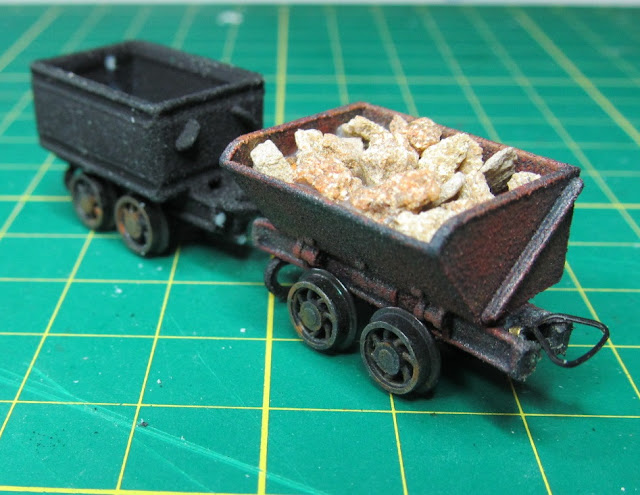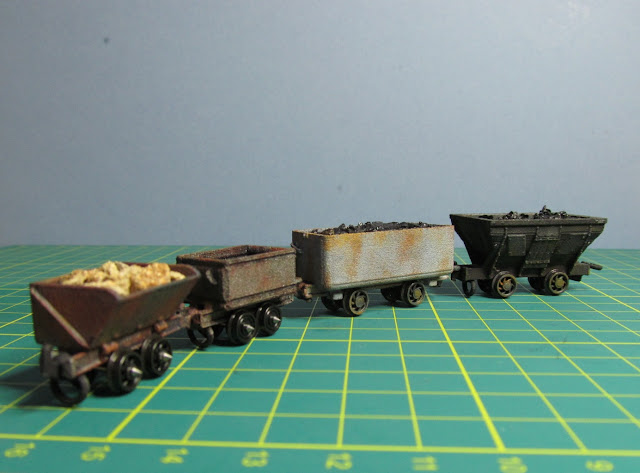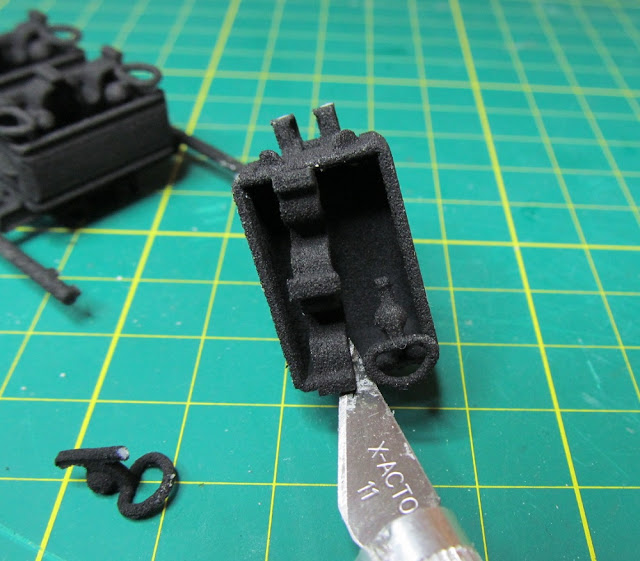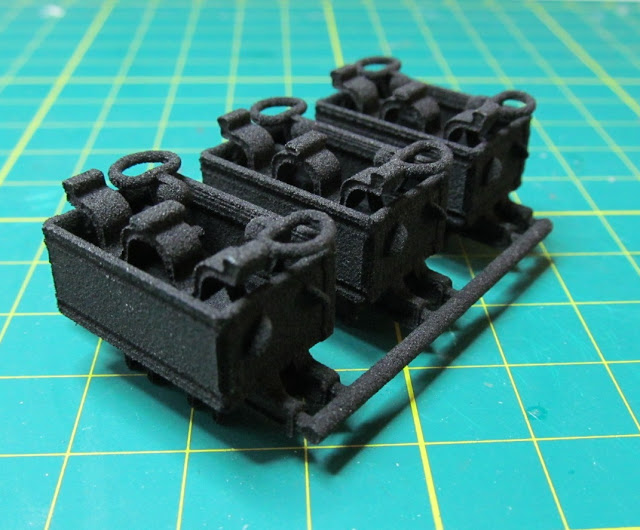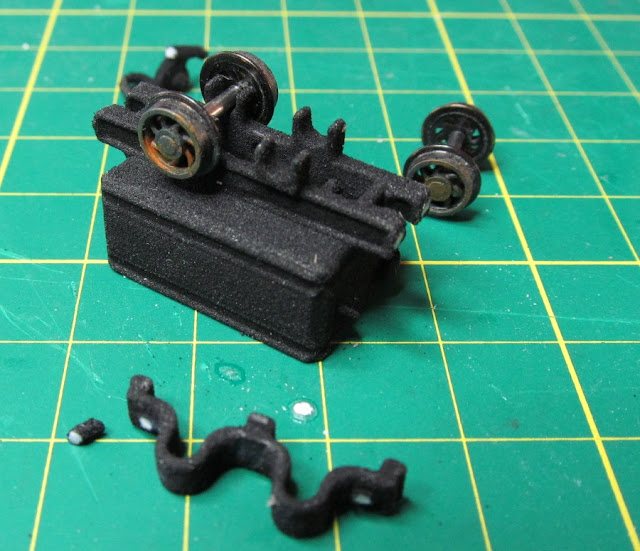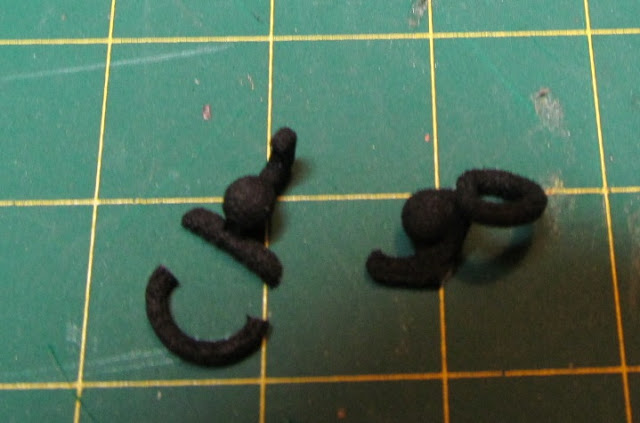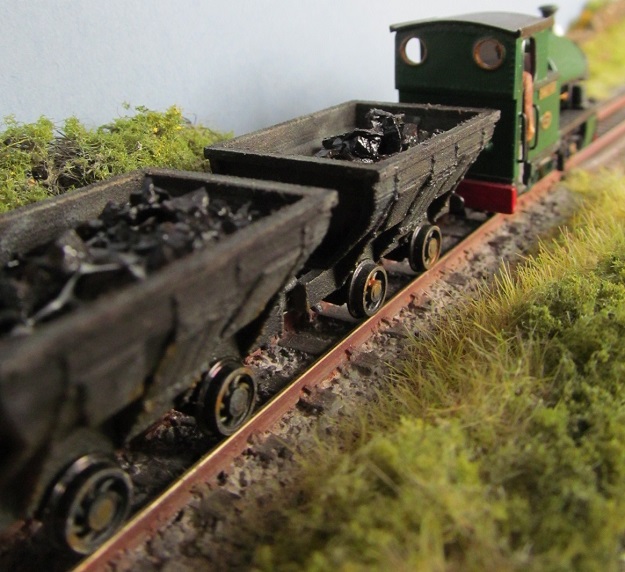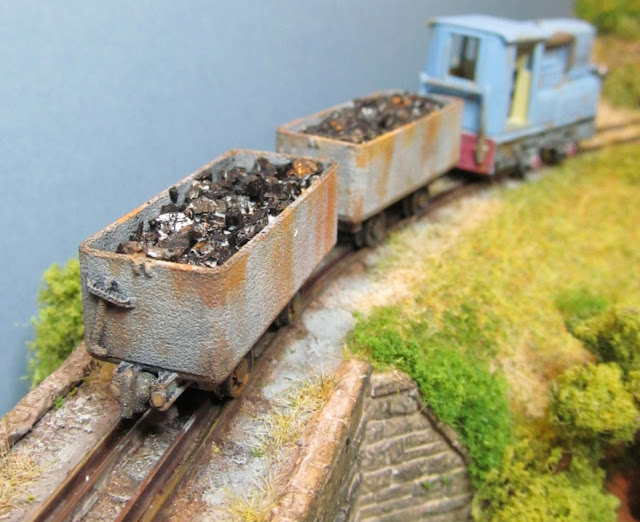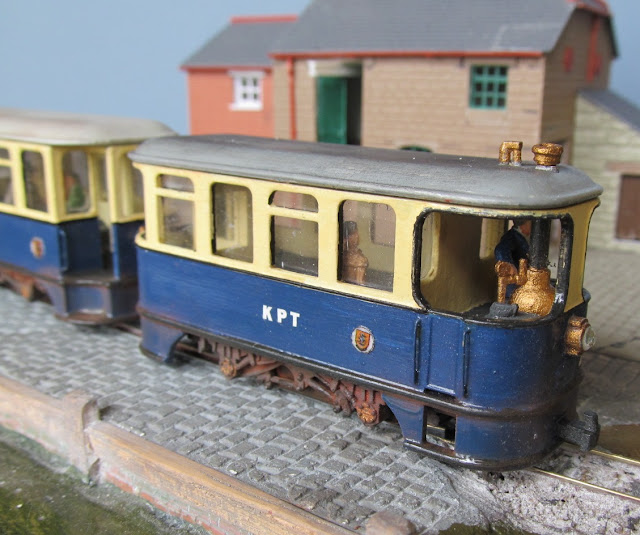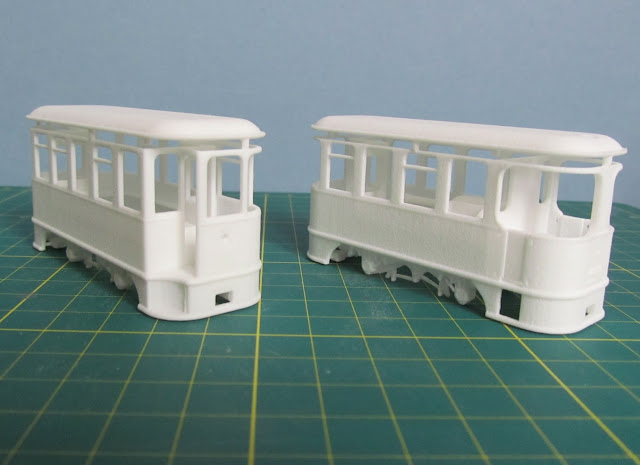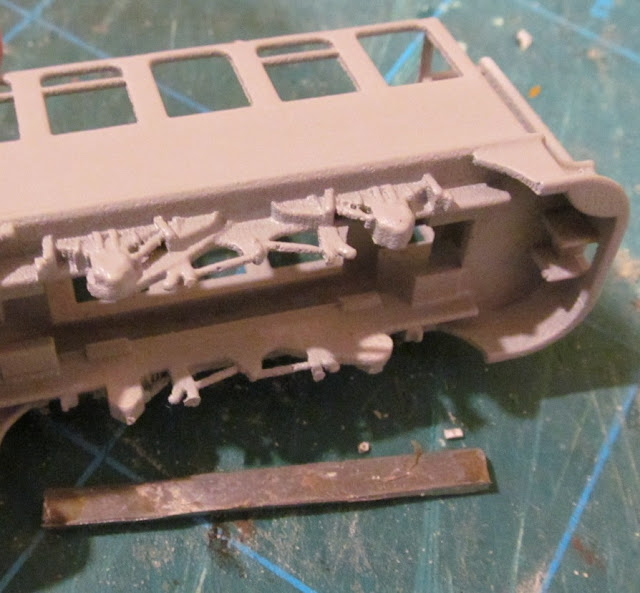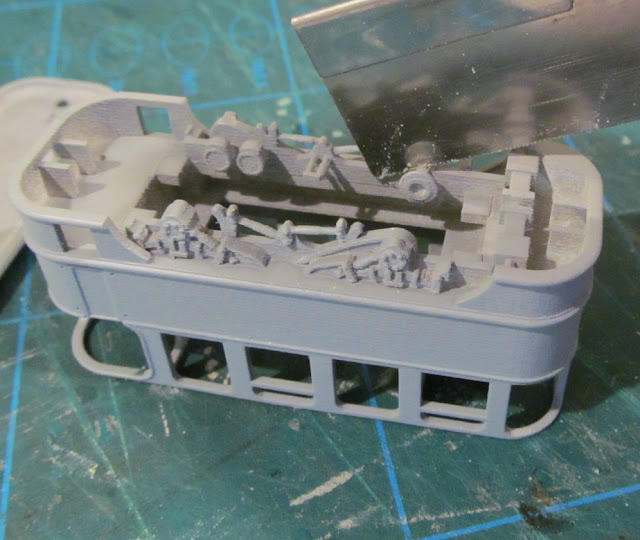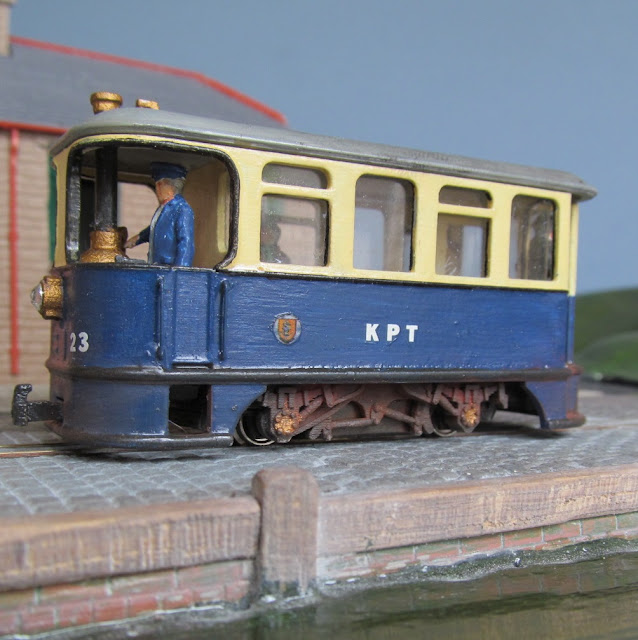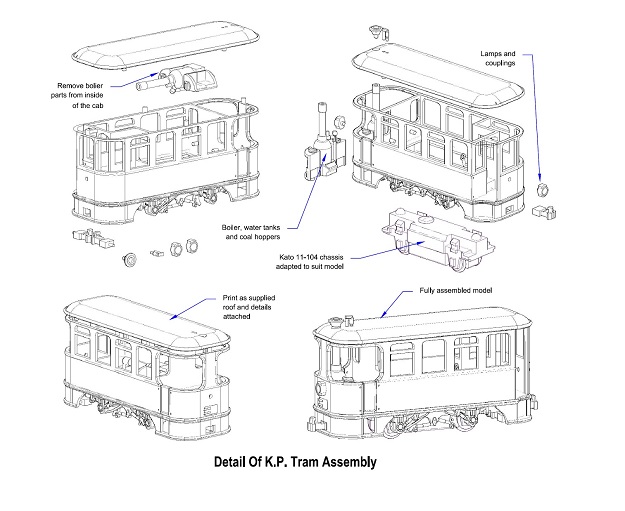A venture into white metal kit building.
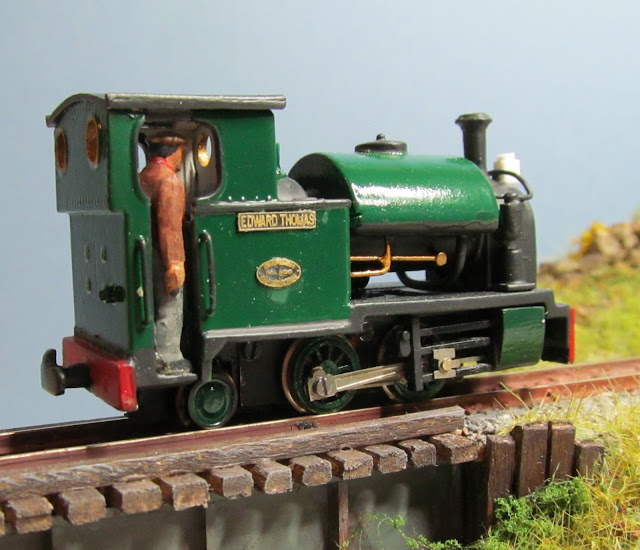 |
© 2018 David Hurst All Rights
Reserved
|
The Kerr Stuart “Tattoo Class” is a favourite of mine and I have
built quite a few models based around this type of engine. They were built by
Kerr Stuart & Co in large numbers at the beginning of the 1900’s as a small
workhorse engine, the majority being for 2 ft gauge lines and having outside
frames, to accommodate the firebox. There were however quite a few built for
wider gauges 2ft 6” and 3ft with inside frames. Being a basic engine, most had
open cabs, though some had enclosed cabs added in different forms at the time
of manufacture, or later by their owners.
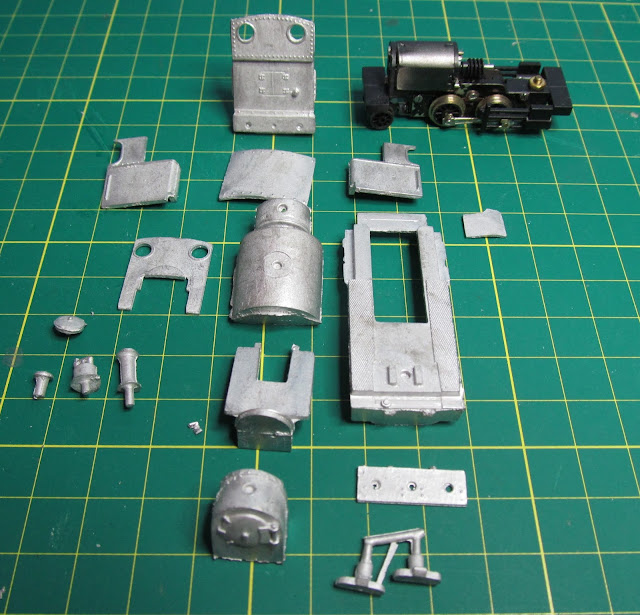 |
© 2018 David Hurst All Rights
Reserved
|
A Christmas gift I once received was a white metal version of the
Talyllyn Railway’s engine Edward Thomas. I had also had an Ndrive Productions 0
4 0 Chassis which was a suitable size to fit the kit, needing only the addition
of a rear pony wheel. The spark that prompted me to finally build the model was
a holiday in mid Wales, where I planned to visit the Talyllyn Railway and
perhaps see Edward Thomas in person.
 |
© 2018 David Hurst All Rights
Reserved
|
I started by looking for the right candidate for a pony wheel, which
needed to be around 5.3 mm. There was also the question of how to mount the
wheel onto the chassis. Now Ndrive Productions (Neville) has a nifty little
etched universal mount to do this job, a cross with several holes to fit the
wheels and create a pivot. The only thing was that you needed a wheel set that
separates from the axles (to pass through the holes in the pony truck etch).
© 2018 David Hurst All Rights
Reserved
I discovered that the Kato wheel sets are held together with a
plastic tube (to electrically insulate the wheels) and are close to the right
size for the pony wheel. By filing off the pinpoint bearing and carefully
opening out the hole in the etch I had a basic pony wheel and mount. Having
selected the suitable pivot hole on the etch, it was then a fiddly job to drill
a small very accurate hole to take a 10 BA cheese head machine screw in the
base of the chassis. Care is needed as you are working very close to the gears,
(so don’t slip)?
This pony wheel assembly is very light and does not ride on the
track well in reverse, although its wheels are free moving and it pivots
easily. The etch being a cross shaped form does give the opportunity to add a
little weight at the back of the wheels. The 10 BA cheese head needed to be
filed down to a thin disk with a new slot cut across it, to avoid catching on
the track at points. It was also necessary to file down the wheel pick-ups at
the back of the chassis or the etch for the pony wheel would not pass over
these.
The other areas of the chassis that needed to be fettled were
above and in front the cylinders. These needed to be filed off and cut to allow
the chassis to sit tightly up to the underside of the footplate. Also, the
width of the rear bar needed reducing at both sides.
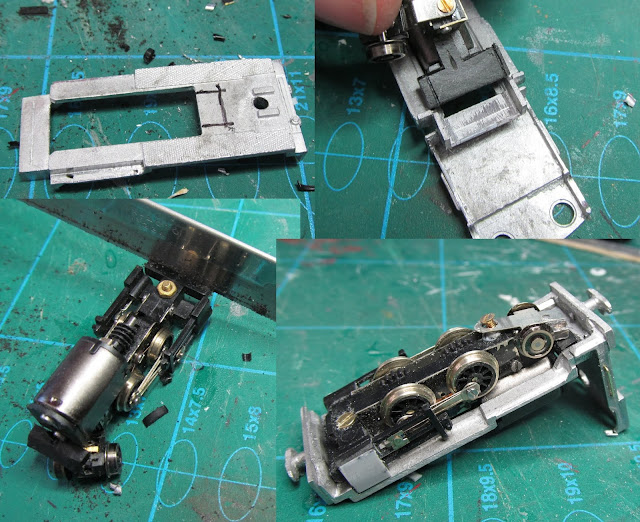 |
© 2018 David Hurst All Rights
Reserved
|
To say that this kit was designed for another type of chassis, it
was a surprisingly good fit. There was a small area for the cab front and
underside of the boiler to remove to accommodate the slightly bigger motor, a
few tweaks to the footplate at the front a small square to cut out for the worm
gear, and that was it. The body and the chassis were held together by forming a
small L shaped bracket at the back and glueing this to the underside of the
cab, this formed a channel for the rear of the chassis to hook into.
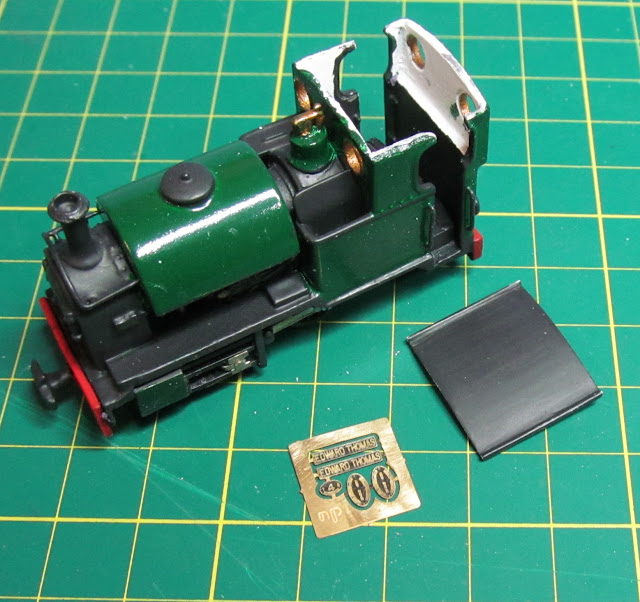 |
© 2018 David Hurst All Rights
Reserved
|
The front fixing of the bodywork uses the existing counter-sunk
machine screw and nut supplied with the chassis. This was done by slightly deepening
the counter sink in the chassis and glueing the nut to the top face of the footplate
situated above the existing hole. All of this was done before the bulk of the
model was put together. I also added the blast under the saddle tank and in the
smoke box before final assembly. It needed more weight at the front to counter
the overhang of the cab, and partly to reduce this weight. I did not use the
cab roof since this appeared too thick and bulky ,but instead formed one in
Plasticard sheet, creating the gutters which the metal roof lacked.
Other modifications to the model included adding brass 0.45 mm
wire handrails to the cab sides and above the smoke box. Also water feed pipe
work under the saddle tank was added to hide the cogs and worm gear. The
shape of the cylinders was changed by using some Plasticard sheet to make them look
more like the prototype. The buffers were not used on this model, only the
supplied coupling plus some lamps and tool boxes.
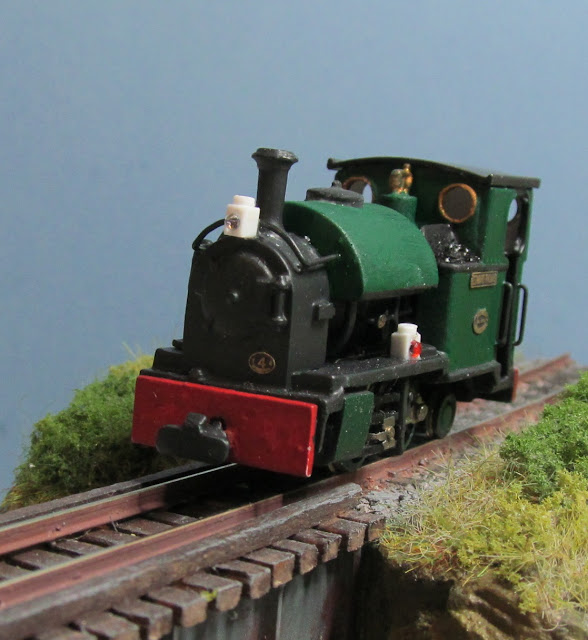 |
© 2018 David Hurst All Rights
Reserved
|
Paintwork on this model was completed when it was fully assembled,
apart from the cab roof which was left loose to allow the cab interior to be
finished. To prime the metal and plastic structure I used a matt grey spray
primer suitable for metal and plastic surfaces. The finishing paints where oil-based
enamels. The green used was a mix of deep Brunswick green and light grey green.
The black areas were a mix of matt black on the smoke box and funnel, the other
areas being painted in a charcoal grey. I used a signal red on the buffer
beams, whilst inside the cab was left in the grey primer finish. Small details
such as pipework and safety valves were picked out in a brass metallic finish.
The whole model was finished in either a matt varnish or satin clear varnish
once details such as the works plates and name plates were fitted.
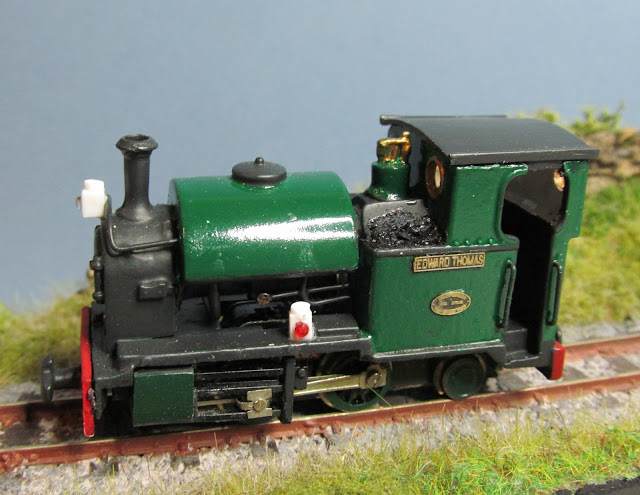 |
© 2018 David Hurst All Rights
Reserved
|
The set of etched brass plates were supplied by Narrow Planet, who
produce a set specifically for “Edward Thomas” from the Talyllyn Railway.
 |
© 2018 David Hurst All Rights
Reserved
|
The engine crew was an adapted Dapol Line side work crew figure , with
one leg shortened to suit the height of the footplate whilst still looking like
a 4 mm scale figure.

